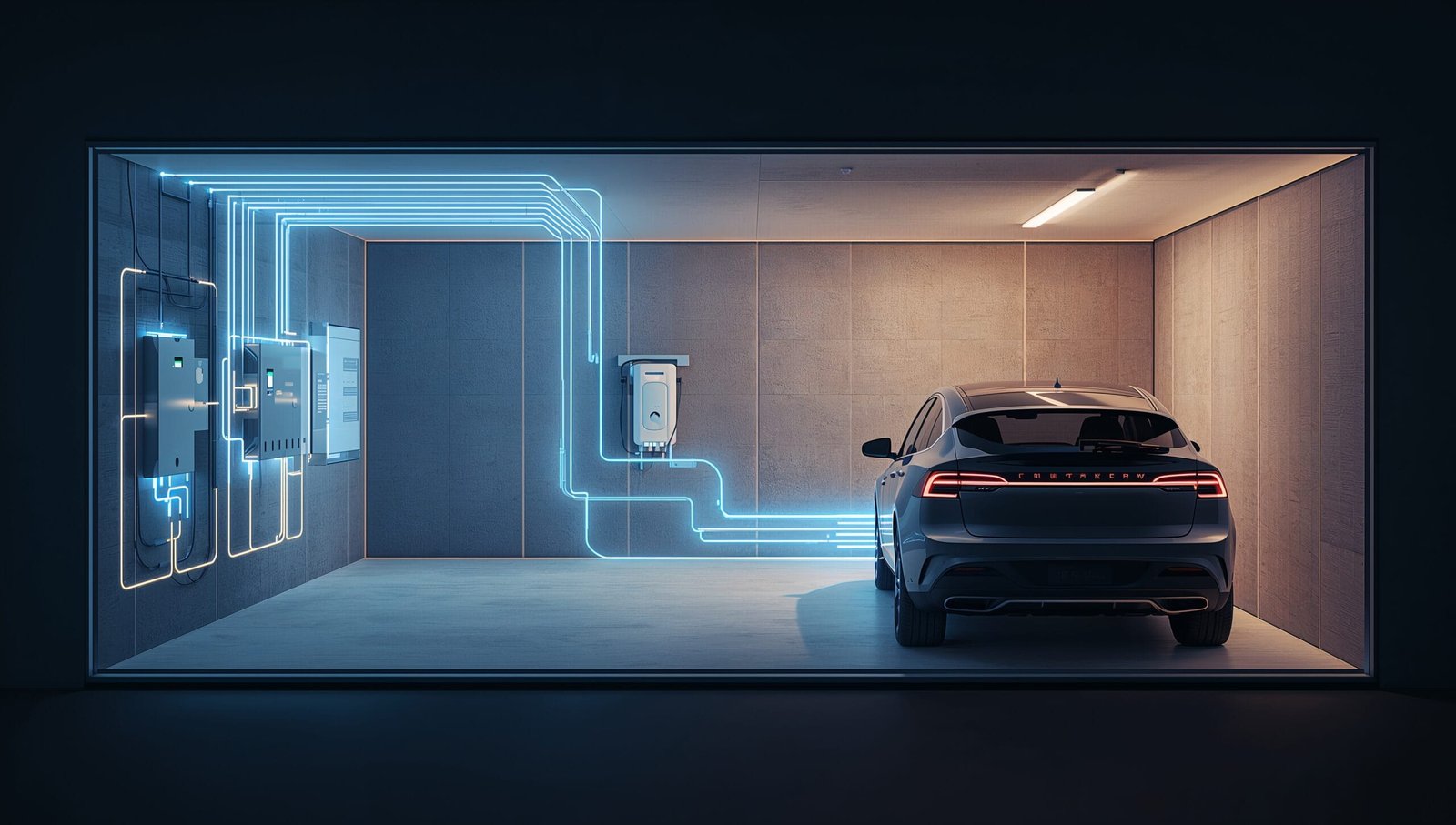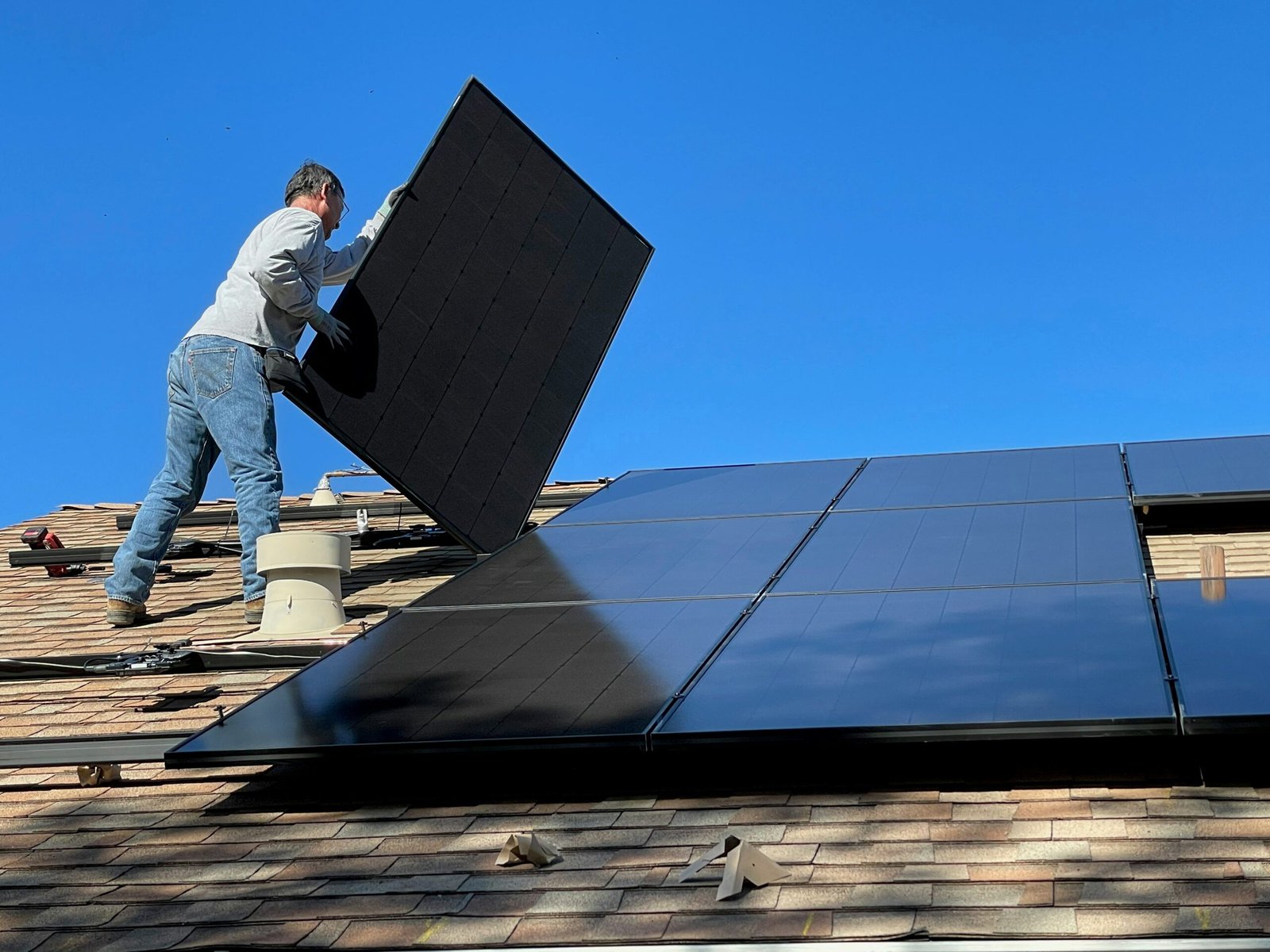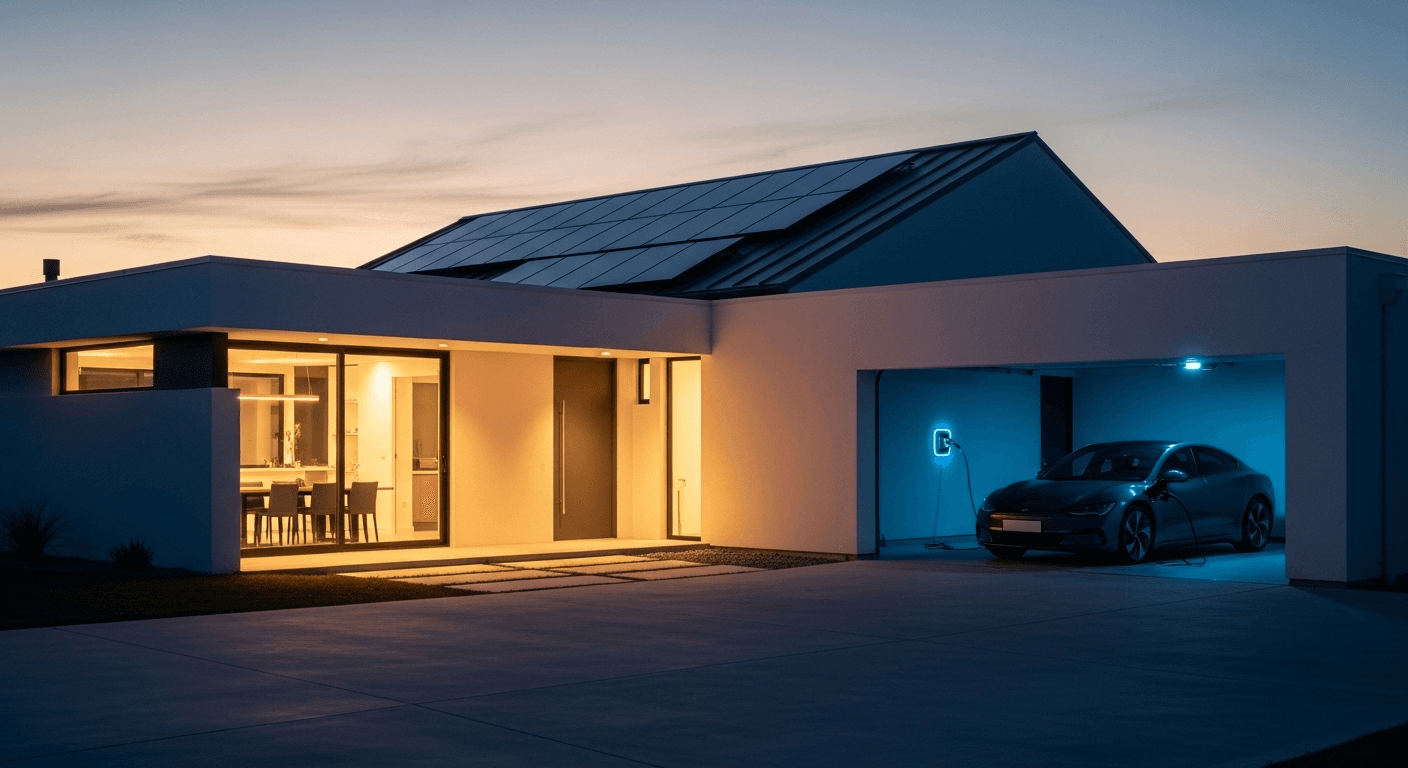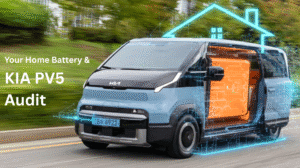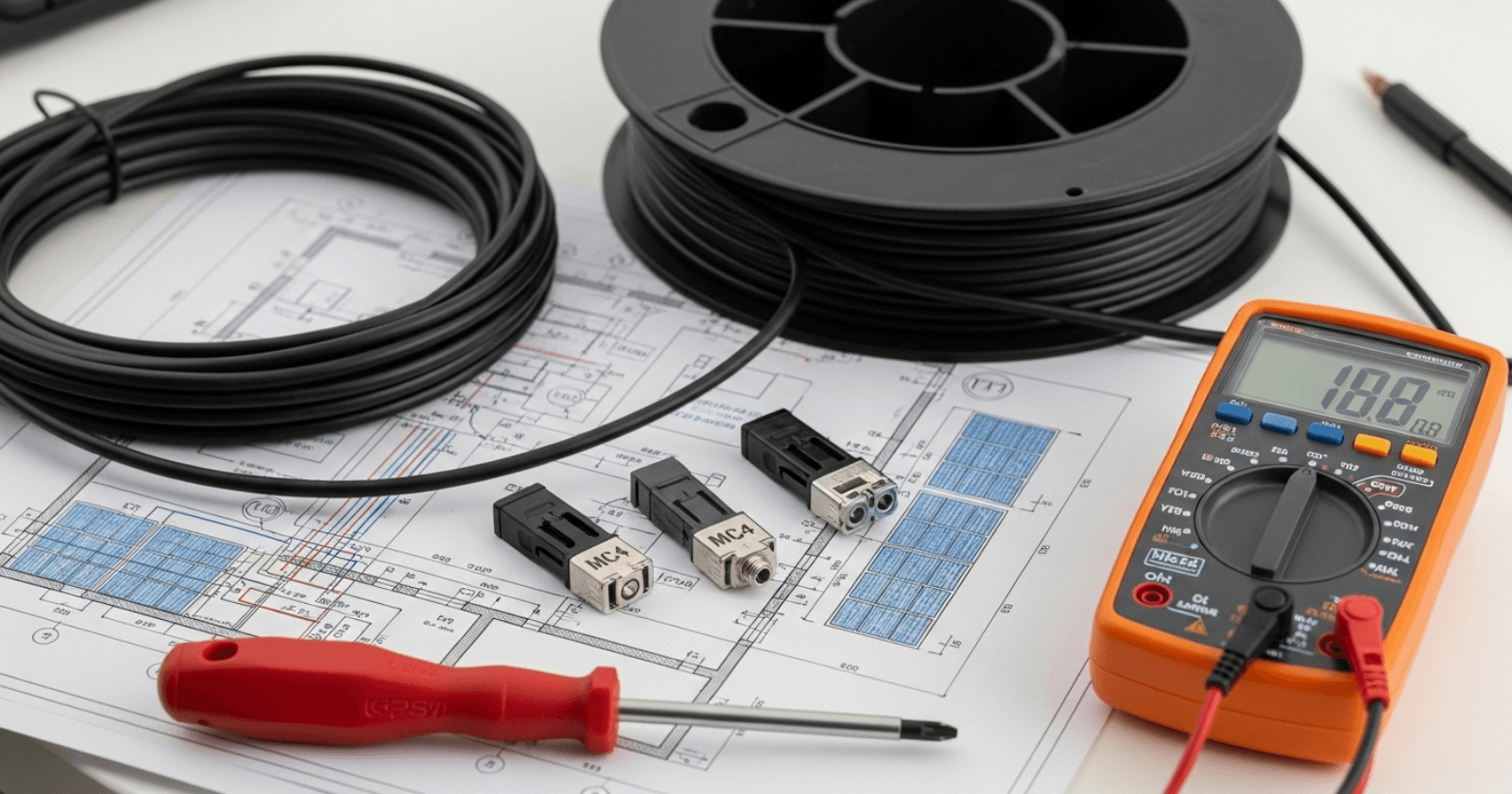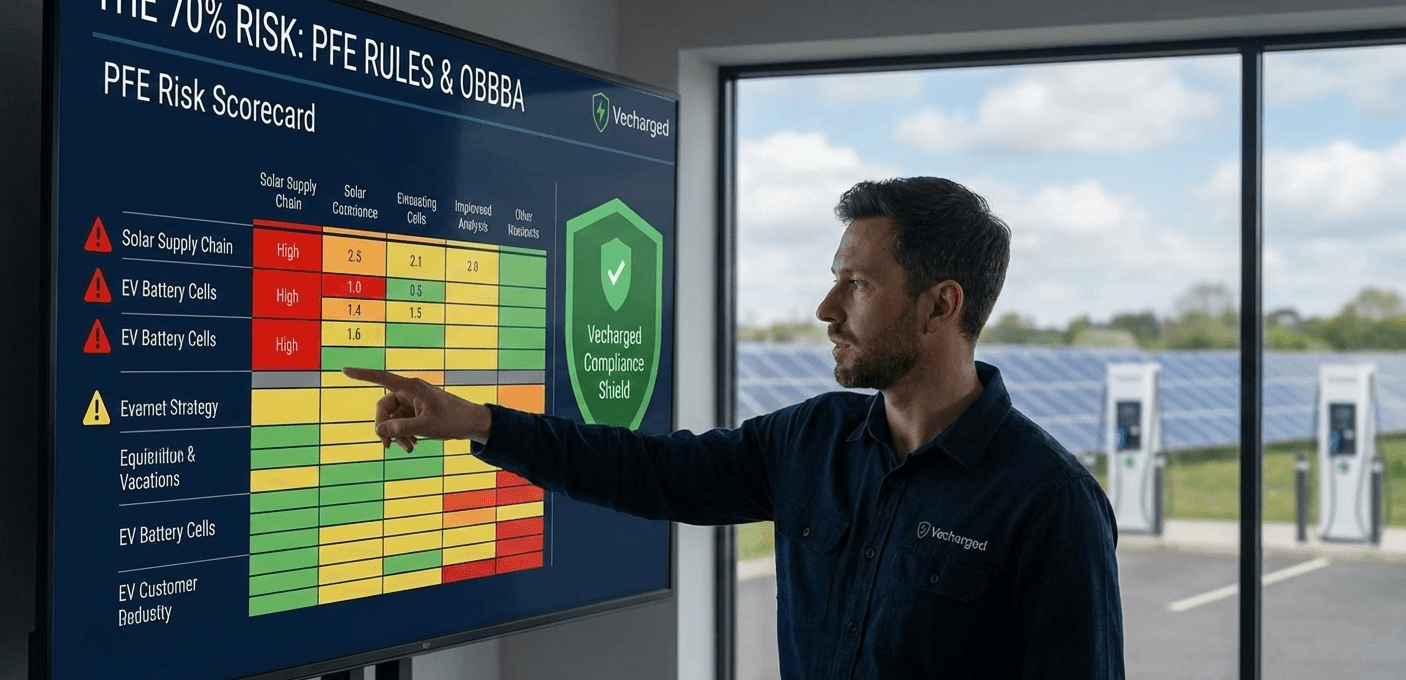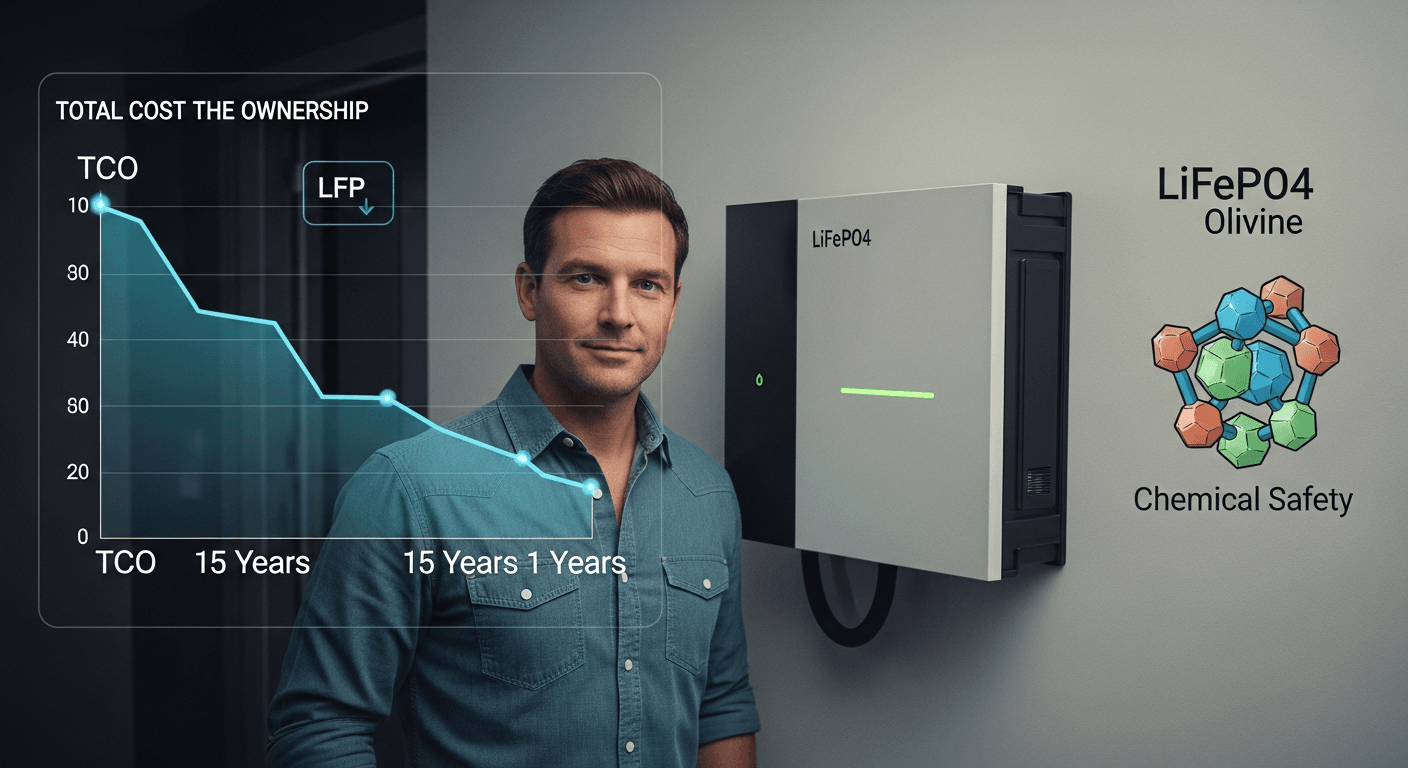The Bottom Line: For most homeowners in 2026, the optimal setup is a 240-volt, 48-amp hardwired smart charger on a dedicated 60-amp circuit. This provides future-proof charging speeds for the next generation of EVs. Expect to pay between $700 and $2,500+ for a professionally installed system, with the final cost heavily dependent on the current capacity of your home’s electrical panel.
Why Your Charger Choice Is More Important Than Ever
Just a few years ago, home EV charging was a simple decision. Today, it’s a strategic choice about the future of your home’s energy ecosystem. With nearly all automakers adopting the North American Charging Standard (NACS), the rise of bi-directional charging, and complex “Time-of-Use” electricity rates, your EV charger is no longer just a “gas pump” in your garage—it’s an intelligent gateway that connects your car, your home, and the grid. Making the right choice now will save you thousands of dollars and significant headaches down the road.
Home EV Charging Cost Estimator
Get a real-time estimate for your home charger installation.
Your Estimated Project Cost
Total Estimated Range
$1,350 – $2,000
*This is an estimate for informational purposes only. Costs can vary based on your specific home, equipment choice, and local labor rates. Always consult a licensed electrician for a formal quote.
Step 1: The Electrical Panel Audit (The Critical First Step)
Before you even browse for a charger, you must understand your home’s electrical capacity. Everything starts at the main service panel (your breaker box). An overloaded panel is a serious fire hazard and the most common source of surprise costs.
QUESTION 1 OF 3
What is your primary goal?
Reliable Daily Charging
I need a cost-effective, no-fuss solution to charge my car overnight.
Maximum Tech & Backup
I want the latest tech for home backup and energy management.
QUESTION 2 OF 3
Do you own (or plan to buy) a V2H-capable vehicle?
(e.g., Ford F-150 Lightning, Chevy Silverado EV)
Yes
No
QUESTION 3 OF 3
Do you have rooftop solar panels?
Yes
No
Your Recommended Profile:
How to Perform a Quick Panel Audit:
- Locate Your Panel: Usually in a garage, basement, or utility closet.
- Find the Main Breaker: This is the large breaker at the top, separate from the others. The number on it (e.g., 100A, 150A, 200A) is the total amperage your home can draw from the grid. Most modern homes have 200A service, while older homes may have 100A or 150A.
- Perform a Load Calculation: A licensed electrician must perform a formal load calculation. However, you can get a rough estimate. Major 240V appliances include central A/C (30-50A), electric dryers (30A), ovens (30-50A), and water heaters (20-30A). If you have 100A service and several of these appliances, adding a 48A EV charger will likely require a service upgrade.
The Electrician’s “80% Rule”: For safety, a circuit should not continuously exceed 80% of its maximum rating. This is why a 48A charger requires a 60A breaker (60A×0.8=48A), and a 40A charger needs a 50A breaker.
The Verdict: If you have 200A service and open slots in your panel, you’re likely in good shape. If you have 100A or 150A service, a panel upgrade might be necessary, potentially adding $2,000 to $5,000 to your project cost. Budget for this possibility.
Step 2: Choosing Your Hardware (The Brains of the Operation)

With your panel capacity understood, you can select your Electric Vehicle Supply Equipment (EVSE), or charger. The key decision is between a simple “dumb” charger and a feature-rich “smart” charger. In 2026, a smart charger is the only logical choice.
A smart charger connects to your Wi-Fi, allowing you to:
- Schedule Charging: Automatically charge during off-peak hours when electricity is cheapest.
- Track Energy Use: Monitor exactly how much energy your EV is consuming.
- Integrate with Utilities: Many power companies offer rebates and special EV rates that require a certified smart charger.
Here is a comparison of leading smart chargers on the market for 2026:
| Feature | Tesla Universal Wall Connector | ChargePoint Home Flex | Autel MaxiCharger AC Elite | Ford Charge Station Pro |
| Max Amperage (Hardwired) | 48A | 50A | 48A | 80A |
| Smart Features | Wi-Fi, App Control, Scheduling | Wi-Fi, App, Utility Integration, Alexa | Wi-Fi, App, RFID, Load Balancing | Wi-Fi, App, V2H Integration |
| Bi-Directional Capable | No | No | No | Yes (V2H) |
| Connector Type | NACS (Integrated J1772 adapter) | NACS or J1772 | NACS or J1772 | NACS (Ford-specific V2H) |
| Estimated Price (Hardware) | ~$600 | ~$650 | ~$550 | ~$1,300 |
Step 3: The Real Cost of Professional Installation
The price of the charger itself is only part of the story. Professional installation is non-negotiable for safety and warranty purposes.
Cost Breakdown:
- Simple Installation: ($700 – $1,200) Your panel is in the garage, has ample capacity, and the charger is mounted nearby. This involves adding a new 60A breaker and running a short length of conduit.
- Moderate Installation: ($1,200 – $2,000) The charger is located farther from the panel, requiring more conduit and wiring (e.g., on the opposite side of the garage or outdoors).
- Complex Installation: ($2,500+) This involves a main panel upgrade, trenching to run a line to a detached garage, or other significant electrical work.
Pro Tip: Always get at least three quotes from licensed electricians. Ensure the quote includes the cost of the permit, which is required in most municipalities.
The Next Frontier: Bi-Directional Charging & V2H
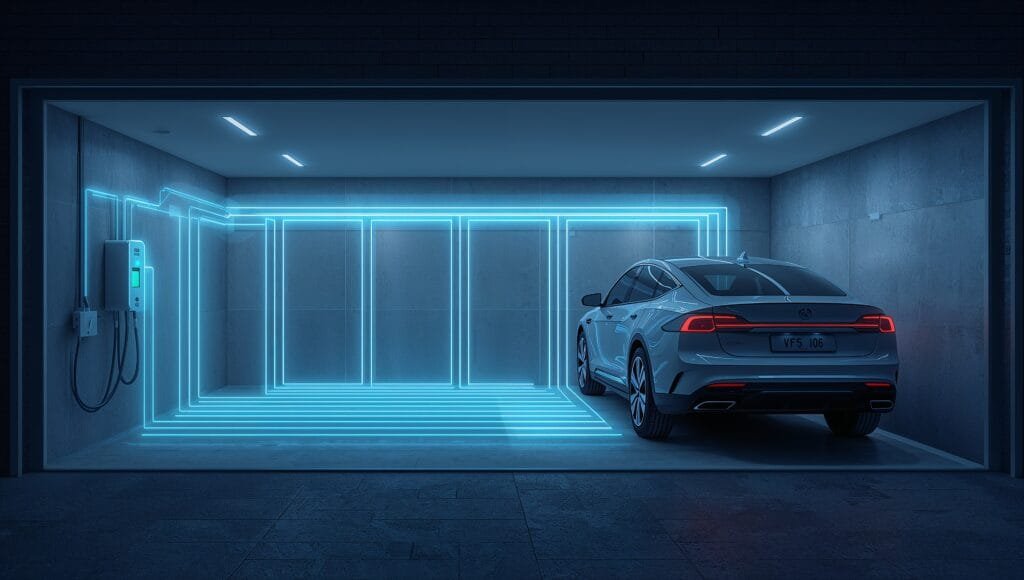
This is where your charger choice becomes a long-term investment. Bi-directional charging allows power to flow both to and from your vehicle. The most practical application of this is Vehicle-to-Home (V2H).
How V2H Works: During a power outage, a V2H system allows your EV—which has a battery 5-8 times larger than a typical home battery like a Tesla Powerwall—to power your entire home.
What’s Required for V2H?
- A V2H-Capable Vehicle: Examples include the Ford F-150 Lightning, Chevrolet Silverado EV, and upcoming models from Hyundai/Kia.
- A Bi-Directional DC Charger: These are more complex and expensive than standard AC chargers. The Ford Charge Station Pro is a prime example.
- An Inverter & Transfer Switch: This hardware, often in a “gateway” device, manages the flow of energy and safely disconnects your home from the grid during an outage.
Data-Driven Analysis: Is V2H Worth It in 2026?
| Factor | Standard Smart Charger (e.g., ChargePoint) | V2H System (e.g., Ford Charge Station Pro) |
| Hardware Cost | ~$650 | ~$1,300 (Charger) + ~$3,000 (Gateway/Switch) |
| Installation Cost | ~$1,000 | ~$2,000 (More complex) |
| Total Estimated Cost | ~$1,650 | ~$6,300 |
| Value Proposition | Convenient, low-cost daily charging. | Daily charging + full home power backup (1-3 days). |
Comparison: A standalone home battery system (like a Tesla Powerwall) costs $12,000-$15,000 installed. From this perspective, a V2H system at ~$6,300 offers compelling value by leveraging an asset—your car—that you already own.
Strategic Verdict: Which Setup is Right for You?
Your ideal charging setup depends on your specific needs and priorities.
- For the Pragmatist: You want reliable, low-cost charging for your daily commute.
- Recommendation: A 48A hardwired smart charger like the Autel MaxiCharger or ChargePoint Home Flex. This setup offers excellent performance and smart features to save on electricity costs, providing the best value for money.
- For the Tech Early Adopter: You want the most advanced technology and see your EV as part of a larger smart-home ecosystem.
- Recommendation: If you own a compatible vehicle, investing in a V2H system is the forward-thinking choice. The energy security and potential for future grid integration (Vehicle-to-Grid, or V2G) make it a powerful long-term asset.
- For the Solar Owner: You generate your own power and want to maximize self-consumption.
- Recommendation: A smart charger with advanced energy management is crucial. Look for models that can integrate directly with your solar inverter system to enable “solar-only” charging, ensuring your car runs on 100% renewable energy from your own roof.
Regardless of the path you choose, investing in a robust, professionally installed home charging system is the single best way to enhance your electric vehicle ownership experience. It turns a daily necessity into a seamless, intelligent, and empowering part of your life.
Frequently Asked Questions
Your most common questions about home EV charging, answered.
Do I really need a 48A charger? Can’t I just use a regular wall outlet?
While you *can* use a standard 120V wall outlet (Level 1 charging), it’s extremely slow, adding only 3-5 miles of range per hour. For a full charge, it could take several days. A 48A Level 2 charger adds 35-45 miles of range per hour, allowing you to fully charge any EV overnight. For convenience and to ensure you always have a full battery, a Level 2 charger is considered essential for any EV owner.
What’s the difference between a “hardwired” and a “plug-in” charger?
A hardwired charger is connected directly to your electrical panel by an electrician, a permanent and robust installation required for maximum 48A charging. A plug-in charger uses a 240V outlet (like a dryer) but is typically limited to 40A for safety. For future-proofing and maximum power, we recommend a hardwired installation.
Is a “smart” charger with Wi-Fi worth the extra cost?
Absolutely. A “smart” charger connects to your Wi-Fi, allowing you to schedule charging sessions to take advantage of cheaper off-peak electricity rates. This feature alone can save you hundreds of dollars per year. They also provide valuable data on your energy consumption and are often required to qualify for rebates from your utility company.
Is Vehicle-to-Home (V2H) the same as Vehicle-to-Grid (V2G)?
They are related but different. Vehicle-to-Home (V2H) allows your car to power your house directly during a blackout. Vehicle-to-Grid (V2G) is a more advanced concept where your car can send power back to the utility grid to help stabilize it, for which you could get paid. V2H is available now, while V2G is still in pilot stages in most areas.
Can I install an EV charger myself to save money?
We strongly advise against it. Installing a 240V, high-amperage circuit is dangerous work that requires a licensed electrician. Improper installation can lead to fire hazards, damage your vehicle’s battery, and will void the charger’s warranty. The cost of professional installation is a necessary investment in safety and reliability.

Suhas Shrikant is the founder of Vecharged and an engineering enthusiast specializing in high-power off-grid solar systems. He has designed and built over a dozen custom systems and uses his hands-on, field-tested experience to create Vecharged’s expert guides and reviews.

